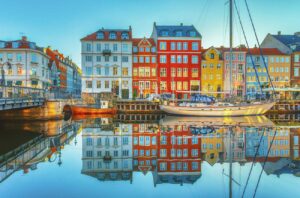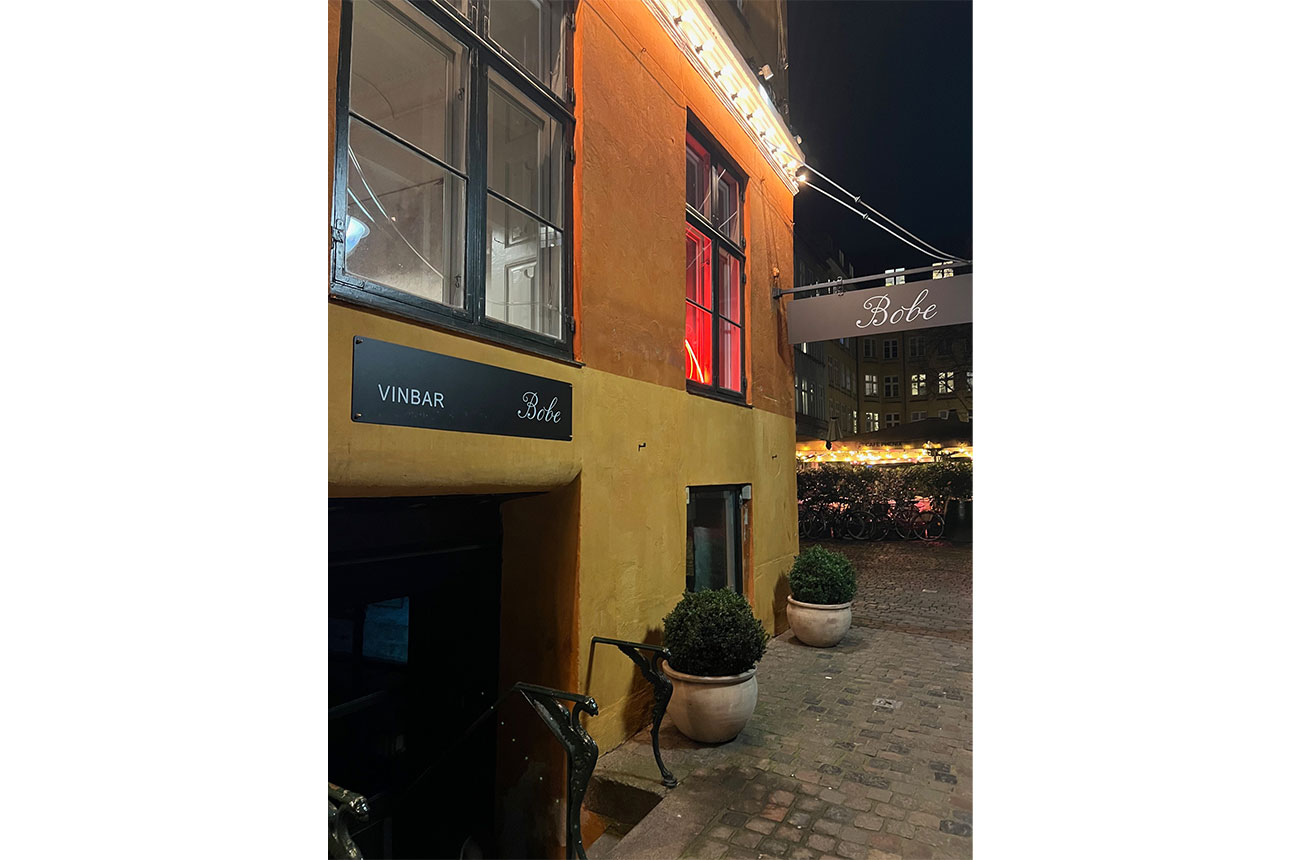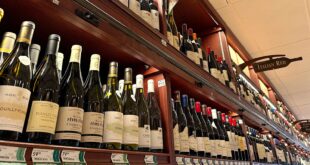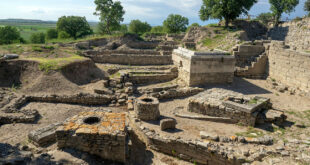[ad_1] 
In addition to copious bike paths, cobblestone streets and thriving green areas, vibrant gastronomy has gained serious traction in Copenhagen over the past few decades, and the proof can be found in nearly every corner of the city.
Although globally revered for its high-end dining scene, the true joys of the city’s unique flavours are often best enjoyed in small, convivial spaces that beautifully embody the hygge – the Danish word for contentment and cosiness – state of mind, especially when paired with a delicious bottle of wine.
Whether passionate about natural wine or looking to stick with the classics, one thing’s for sure: there’s a bottle of wine for every type of enthusiast just waiting to be popped in Copenhagen – it’s just a matter of knowing where to look.
Best Copenhagen wine bars & restaurants: 13 to try
Apéro
Situated in a 290-year-old red house on the corner of Møntergade and Gammel Mønt, Apéro provides a calm reprieve from the hustle and bustle of Copenhagen’s bustling shopping district. The menu is centered around shareable small plates and classically focused wine list, with extensive by-the-glass options also available. Spearheaded by the same owners and chef as the city’s famed Møntergade restaurant, Apéro takes more of a global approach to its cuisine than its Danish-focused older sibling, offering a cosier ambiance and all-around warmer vibe (the small upstairs sitting area feels like walking into a Scandinavian living room). Grab a glass – or bottle – of Champagne, and don’t miss the stuffed morel mushroom with scallop, zander, sesame and vadouvan sauce. Walk-ins welcome.
Address: Gammel Mønt 41, 1117 Copenhagen
Auren’s Deli

Credit: Vicki Denig
Located in Copenhagen’s Frederiksberg neighbourhood, Auren’s Deli is a lively wine bar, delicatessen and small grocery shop space offering farm-to-table products from its eponymous Kirke Hyllinge-based farm. The shop sells an array of organic produce, cheese, charcuterie and dried goods, and by night, becomes a jovial wine bar focused on small sharing plates and natural wines. Guests are encouraged to peruse the fridge and shelves themselves to view the ever-changing selection of bottles, with by-the-glass options and a handful of beers, ciders and hot drinks also available. In the words of Auren’s, the spot highlights ‘familiar and uncommon ingredients that encourage conversation and creativity’. Walk-ins welcome.
Address: Godthåbsvej 35, st. Th, 2000 Frederiksberg
Bar Vivant
Known for its warm hospitality and affordable by-the-glass pours, Bar Vivant has become a go-to favourite for neighborhood locals and visitors alike. Tucked away in Nørrebro, the wine bar / bottle shop hybrid is overseen by Andreas Christiansen and Mads Larvåg Mørch, two Norwegian natives passionate about natural, low-intervention wines. The bar’s small yet tasty menu highlights local breads and tinned fish, with wine selections sourced from all across Europe. Enjoy a glass (or few) in the bar’s cheerful ambiance – and if you happen to be in town for the shop’s monthly wine quiz night, all the better.
Address: Elmegade 4, 2200 Copenhagen
Bobe

Credit: Vicki Denig
If refreshing wine and belly-warming food served in a spacious-yet-cosy ambiance – massive fireplace included – is up your street, then a trip to Bobe is simply unmissable. Located in a historic house originally constructed in 1731, the restaurant’s kitchen is run by chef Bo Bech, a Denmark native with over 30 years of culinary experience, and highlights contemporary plates produced from locally sourced ingredients. Vegetarians will take delight in the spot’s grilled Brussels sprouts with capers and pistachios and baked celeriac with mustard sauce, as well as ricotta gnocchi with sorrel, and more. Bobe’s wine list highlights a variety of sustainable, organic and natural producers, and from our experience, there’s really no better way to end a long day…
[ad_2]Source : https://www.decanter.com/wine-travel/restaurant-and-bar-recommendations/best-copenhagen-wine-bars-restaurants-430182/



